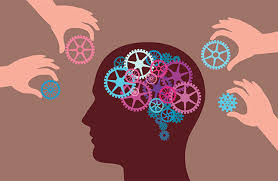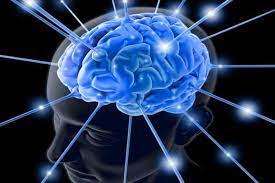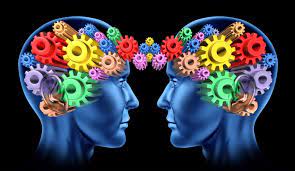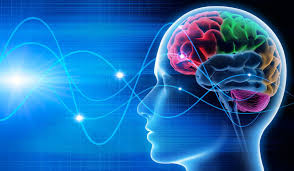Olá amigos e amigas, no post de hoje, vou contar a vocês a história e o que é a programação neurolinguísitca e espero que vocês se encantem e admirem essa história igual eu.
Hello friends, in today’s post, I’m going to tell you the story and what neuro-linguistic programming is and I hope you’ll be enchanted and admire this story just like I do.

História da PNL
History of NLP
No início dos anos 70, Richard Bandler, um estudante de psicologia, e John Grinder, um professor de linguística, iniciaram os estudos sobre PNL na Universidade de Santa Cruz – Califórnia. Os primeiros trabalhos que realizaram foi modelar famosos terapeutas da época, buscando identificar quais eram os padrões internos e externos que eles utilizavam que tornavam o trabalho deles tão efetivo. Esses terapeutas eram Milton Erickson, um médico hipnólogo, Virginia Satir, que atuava com terapia familiar e Fritz Perls, que desenvolveu a terapia de gestalt.
In the early 1970s, Richard Bandler, a psychology student, and John Grinder, a linguistics professor, began studying NLP at the University of Santa Cruz – California. The first work they carried out was to model famous therapists of the time, seeking to identify what were the internal and external standards they used that made their work so effective. These therapists were Milton Erickson, a medical hypnologist, Virginia Satir, who practiced family therapy, and Fritz Perls, who developed gestalt therapy.
Bandler e Grinder começaram a modelar esses terapeutas, tanto na linguagem corporal (não verbal) quanto na linguagem falada (verbal), buscando desenvolver técnicas que eles mesmos pudessem replicar, elevando desta forma os resultados nos seus próprios atendimentos. Outros estudantes e pesquisadores se envolveram com este trabalho de “modelagem”, ampliando-o para diferentes contextos (negócios, artes, criação), focando em pessoas de sucesso, sempre buscando identificar quais eram os padrões que faziam a diferença nos resultados que estas pessoas alcançavam.
Bandler and Grinder began to model these therapists, both in body language (non-verbal) and in spoken language (verbal), seeking to develop techniques that they themselves could replicate, thus increasing the results in their own sessions. Other students and researchers got involved with this “modeling” work, expanding it to different contexts (business, arts, creation), focusing on successful people, always seeking to identify what were the patterns that made the difference in the results these people achieved reached.

Observou-se alguns padrões externos, como comportamentos e linguagens específicas que essas pessoas utilizavam, que as ajudavam a realizar suas atividades com excelência e influenciavam seus resultados. Eles também observaram que existiam padrões internos, como crenças e pressupostos, que eram poderosos recursos para o alcance do sucesso.
Some external patterns were observed, such as specific behaviors and languages that these people used, which helped them to carry out their activities with excellence and influenced their results. They also noted that there were internal patterns, such as beliefs and assumptions, that were powerful resources for achieving success.
Ou seja, por trás dos nossos comportamentos existe uma estrutura interna de pensamentos e emoções que impactam diretamente as nossas ações e consequentemente os resultados que alcançamos em nossas vidas.
That is, behind our behaviors there is an internal structure of thoughts and emotions that directly impact our actions and consequently the results we achieve in our lives.

Por que utilizar a PNL?
Why use NLP?
Por trás de toda ação existe uma razão, um motivo para agirmos. Se buscamos gerar uma mudança no comportamento de uma pessoa, ou seja, na sua atuação, precisamos compreender primeiramente o motivo da pessoa agir da forma que age, o modelo de mundo dessa pessoa, o que chamamos de modelos mentais.
Behind every action there is a reason, a reason to act. If we seek to generate a change in a person’s behavior, that is, in their performance, we first need to understand why the person acts the way they do, that person’s model of the world, what we call mental models.
Segundo Peter Senge, modelos mentais são “pressupostos profundamente arraigados, generalizações, ilustrações, imagens ou histórias que influem na nossa maneira de compreender o mundo e nele agir”. Em outras palavras, são os modelos mentais de cada indivíduo que definem como o mesmo irá perceber o que está acontecendo a sua volta, como irá se sentir com isso, como ele pensa e, finalmente, como irá agir.
According to Peter Senge, mental models are “deeply held assumptions, generalizations, illustrations, images or stories that influence the way we understand the world and act in it”. In other words, it is the mental models of each individual that define how he will perceive what is happening around him, how he will feel about it, how he thinks and, finally, how he will act.
O problema que encontramos, referente aos nossos modelos mentais, é que a maioria é inconsciente, ou seja, não sabemos que possuímos um determinado modelo mental e isso faz com que muitas vezes ajamos de determinada maneira sem nem saber exatamente o porque.
The problem we found, referring to our mental models, is that most of them are unconscious, that is, we don’t know that we have a certain mental model and this often causes us to act in a certain way without even knowing exactly why.

O que é PNL?
What is NLP?
A PNL permite compreender melhor nosso funcionamento interno, identificar nossos modelos mentais, para que possamos questioná-los, refletir sobre eles e se é preciso ressignificá-los.
NLP allows us to better understand our internal functioning, identify our mental models, so that we can question them, reflect on them and if we need to reframe them.
Esse aspecto é que influenciou o surgimento do nome “programação”, pois esse conhecimento sugere que a partir das nossas histórias, experiências, valores, somos programados a ter determinadas crenças e modelos mentais que impactam diretamente o nosso comportamento. Da mesma forma, que a partir de técnicas de PNL e ferramentas podemos “reprogramar” a nossa estrutura interna com foco nos resultados que queremos alcançar.
This aspect is what influenced the emergence of the name “programming”, as this knowledge suggests that from our stories, experiences, values, we are programmed to have certain beliefs and mental models that directly impact our behavior. Likewise, using NLP techniques and tools we can “reprogram” our internal structure with a focus on the results we want to achieve.
Se pararmos para refletir, todos nós temos histórias de vida, interesses, valores, crenças e motivações completamente diferentes, o que faz com que tenhamos percepções de mundo diferentes. Isso faz com que pessoas vejam as situações de formas distintas e, consequentemente, também reajam de outras maneiras, o que pode interferir diretamente no relacionamento interpessoal.
If we stop to reflect, we all have completely different life stories, interests, values, beliefs and motivations, which makes us have different perceptions of the world. This makes people see situations in different ways and, consequently, also react in other ways, which can directly interfere with interpersonal relationships.
A realidade externa de um evento é igual para todos, e recebemos as informações através dos nossos canais sensoriais (NEURO), que passam por filtros (PROGRAMAÇÃO) e formam uma representação interna para a pessoa. Essa representação interna gera um estado na pessoa, ou seja, leva a diferentes emoções que acabam interferindo na fisiologia e também nos comportamentos, nas ações dessa pessoa, tanto aspecto verbal quanto não verbal (LINGUÍSTICA).
The external reality of an event is the same for everyone, and we receive information through our sensory channels (NEURO), which pass through filters (PROGRAMMING) and form an internal representation for the person. This internal representation generates a state in the person, that is, it leads to different emotions that end up interfering in the physiology and also in the behaviors, in the actions of that person, both verbal and non-verbal aspects (LINGUISTIC).

A grande questão está vinculada aos filtros utilizados, pois estes são diferentes para cada pessoa. É comum uma pessoa, ao processar as informações, omitir alguma parte ou logo já generalizar a informação, podendo até distorcê-la, baseado em seus valores, crenças e histórico de vida. Então, ao observar a reação ou o comportamento de uma pessoa frente à determinada situação, é importante termos claro que esta pessoa tem um mapa de mundo diferente do nosso. E para ajudá-la no seu desenvolvimento, devemos primeiramente compreender o “mapa” que ela utiliza.
The big question is linked to the filters used, as these are different for each person. It is common for a person, when processing information, to omit some part or to generalize the information, and may even distort it, based on their values, beliefs and life history. So, when observing a person’s reaction or behavior in the face of a given situation, it is important to be clear that this person has a map of the world that is different from ours. And to help her in her development, we must first understand the “map” she uses.
Todos os padrões internos e externos que os pesquisadores identificaram nas pessoas que alcançam os resultados que desejam em suas vidas foram transformados em modelos, ferramentas e técnicas que hoje são ensinados pela SBPNL.
All the internal and external patterns that researchers identified in people who achieve the results they want in their lives were transformed into models, tools and techniques that are taught today by SBPNL.

Fiquem sempre ligados no meu Instagram @erikasantos para mais dicas como essa.
Beijos, Erika!





